Since the early ’70s, the guitar legend has trusted his 1960 “Hitmaker” Strat to turn out chart-toppers that have changed the course of music history and shaped cultures around the world. We explore its unusual origins and DNA as well as uncover some ordinary tools making extraordinary grooves.
Guitarist and producer Nile Rodgers has received virtually every significant honorific that exists for musical achievement. He’s a hall-of-famer twice over, having been inducted to both the Rock & Roll Hall of Fame and the Songwriters Hall of Fame. He’s won six Grammys, including the prestigious Lifetime Achievement award.
The accolades hardly begin to capture how monumentally important and influential Rodgers’ music career has been. Since beginning with his disco-funk-rock fusion outfit Chic in 1972, Rodgers has been pioneering musical language that, among other things, sparked the advent of hip-hop. He’s also the producer who introduced the world to Stevie Ray Vaughan via Bowie’s “Let’s Dance.”
Rodgers invited John Bohlinger and the PG team to the Chic show at Nashville’s Bridgestone Arena, where they met with his trusty tech Gert Marckx. Marckx took us through Rodgers’ streamlined touring rig, capped off with Rodgers’ holy grail guitar—the instrument that’s at least partially responsible for the sale of half a billion records around the world.Brought to you by D’Addario XPND Pedalboard.
Need To Make a Hit? Get a Hitmaker
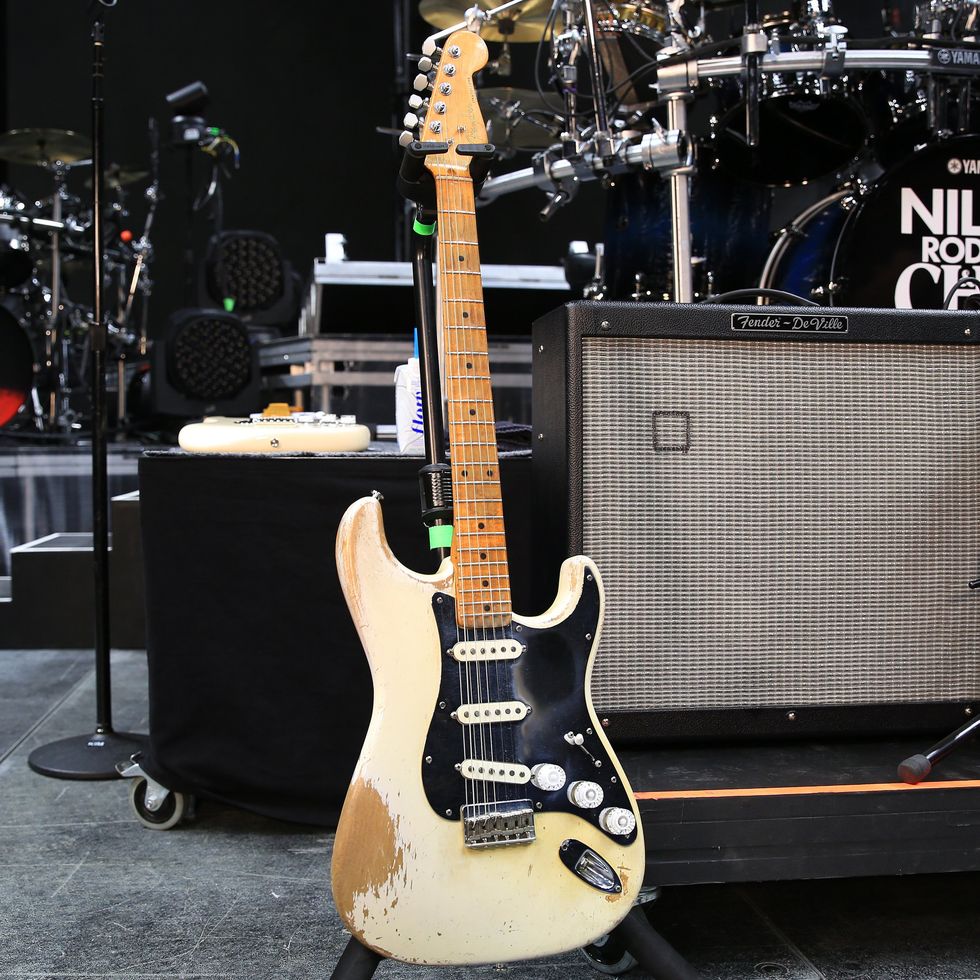
Rodgers’ primary guitar since the ’70s is a 1960 Fender Stratocaster called “The Hitmaker.” We probably don’t need to spell out what it does.
Rodgers acquired the “The Hitmaker” when Chic was just starting out through a fateful trade at a guitar shop in Miami Beach. It features a 1959 neck paired with a 1960 alder body that’s just a touch smaller and more contoured than your average vintage Strat, and shortly after he got it, Rodgers refinished it in white as a tribute to Hendrix. (As you can tell, it's been a while since that initial refinish.) The custom ’59-profile one-piece maple neck has a 9.5” radius fingerboard, and medium jumbo frets.
Up Close with the Hitmaker
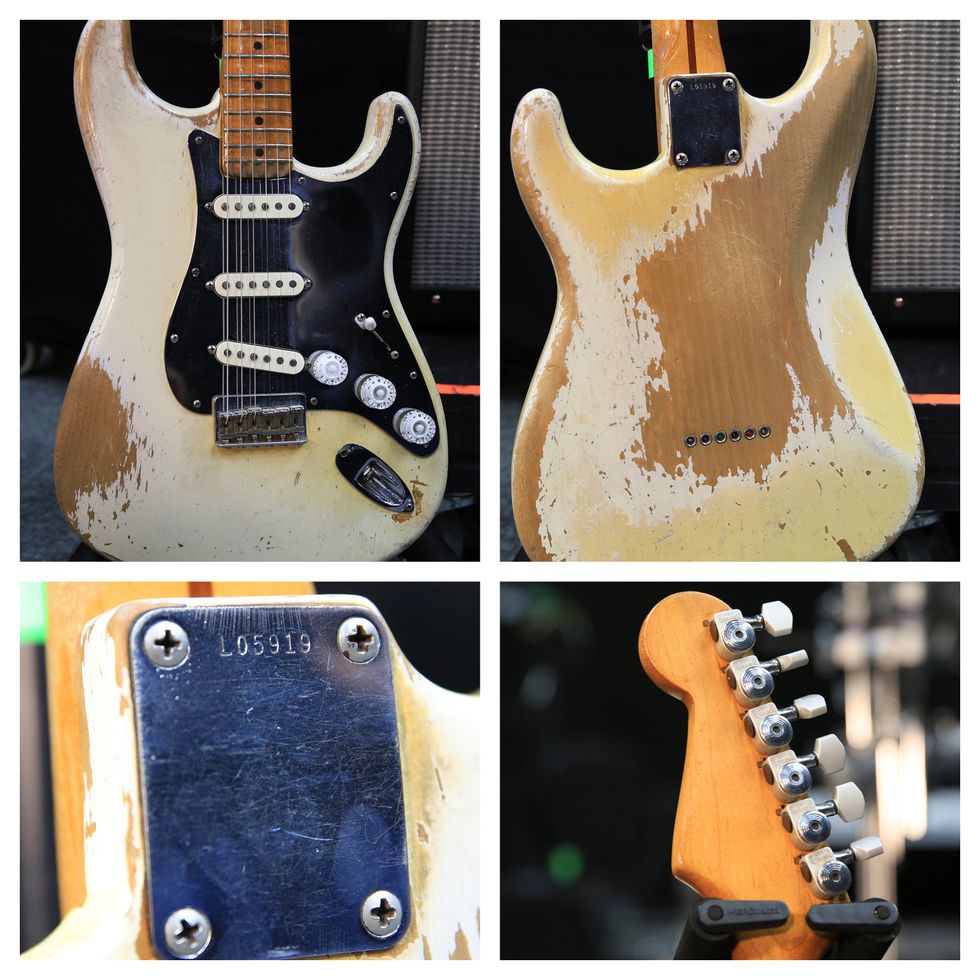
Here's some detailed shots of the 1960 Strat that's made the world shake their moneymakers.
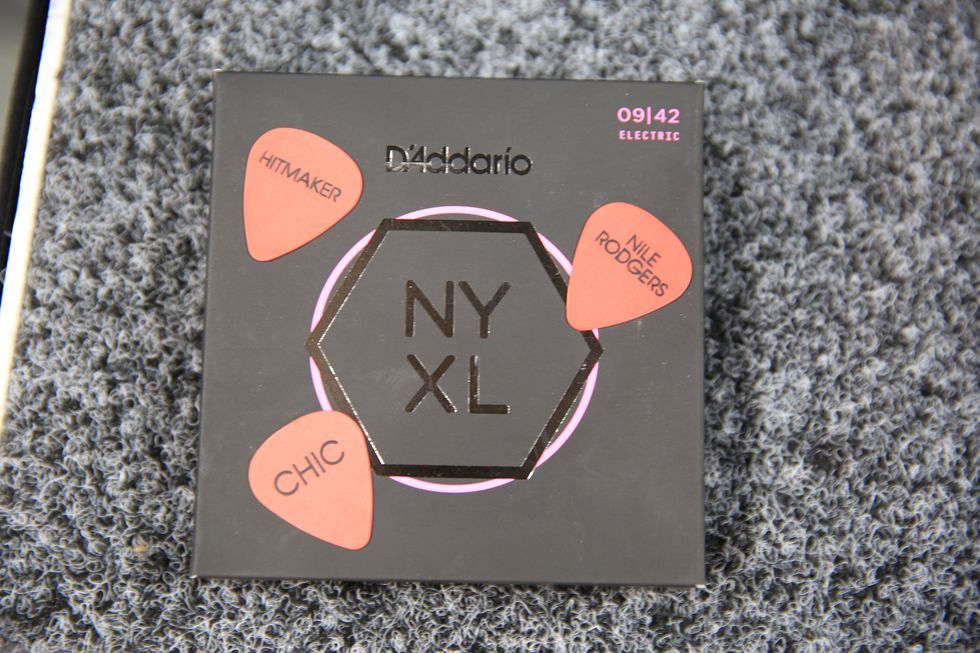
Marckx keeps “The Hitmaker” strung with nickel wound D’Addario NYXL .009-.042 Super Lights, and Rodgers prefers D’Addario Duralin Standard Super Light Gauge .50mm picks.
Chip Off the Old Block
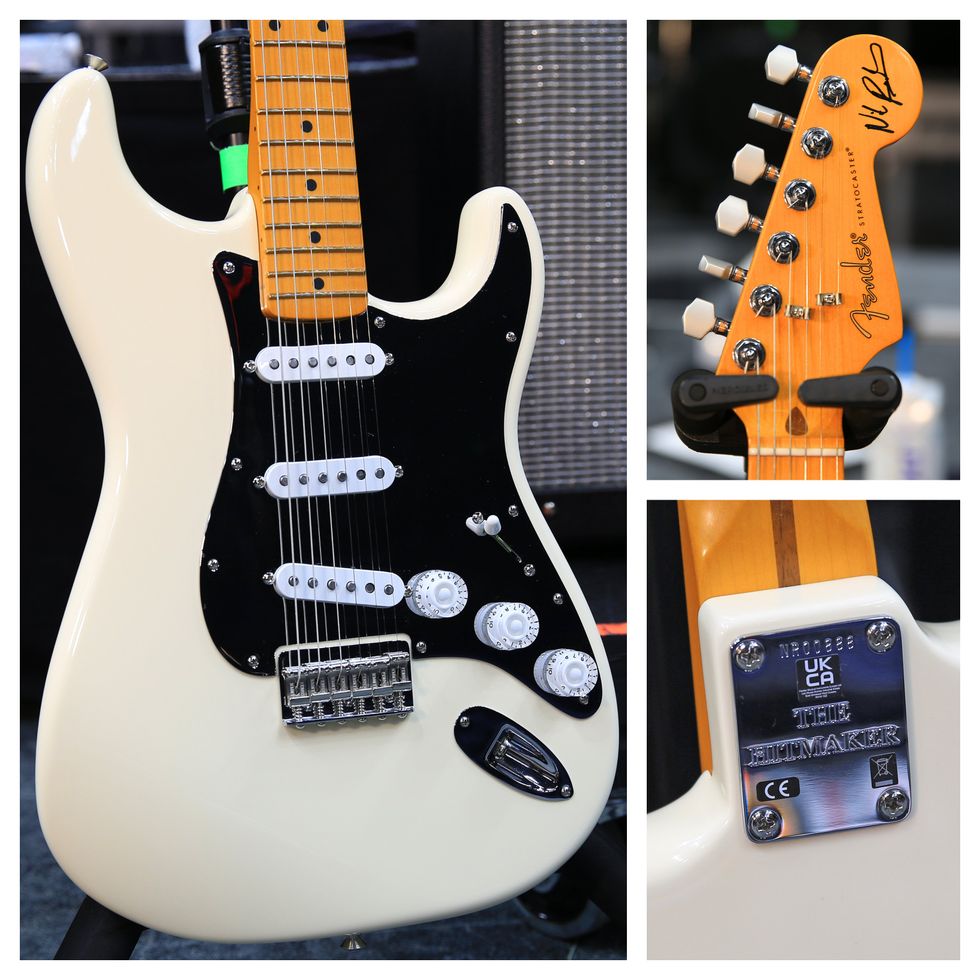
Rodgers tours with a backup guitar just in case the original “Hitmaker” should need some time off, but it’ll look pretty familiar.
His number two is his Fender artist model, the Nile Rodgers Hitmaker Stratocaster. It sports the same appointments as its predecessor: a Slim Alder body with special contours, a ’59-profile one-piece maple neck with a 9.5” radius fingerboard, medium jumbo frets and a satin finish.
Rodgers keeps his factory standard, with Fender’s own Nile Rodgers Hitmaker Single-Coil Strat Pickups, hard-tail bridge, and locking tuners. And like the original, junior here stays strung with D’Addario NYXL .009-.042 Super Lights.Hitmaker's Helpers
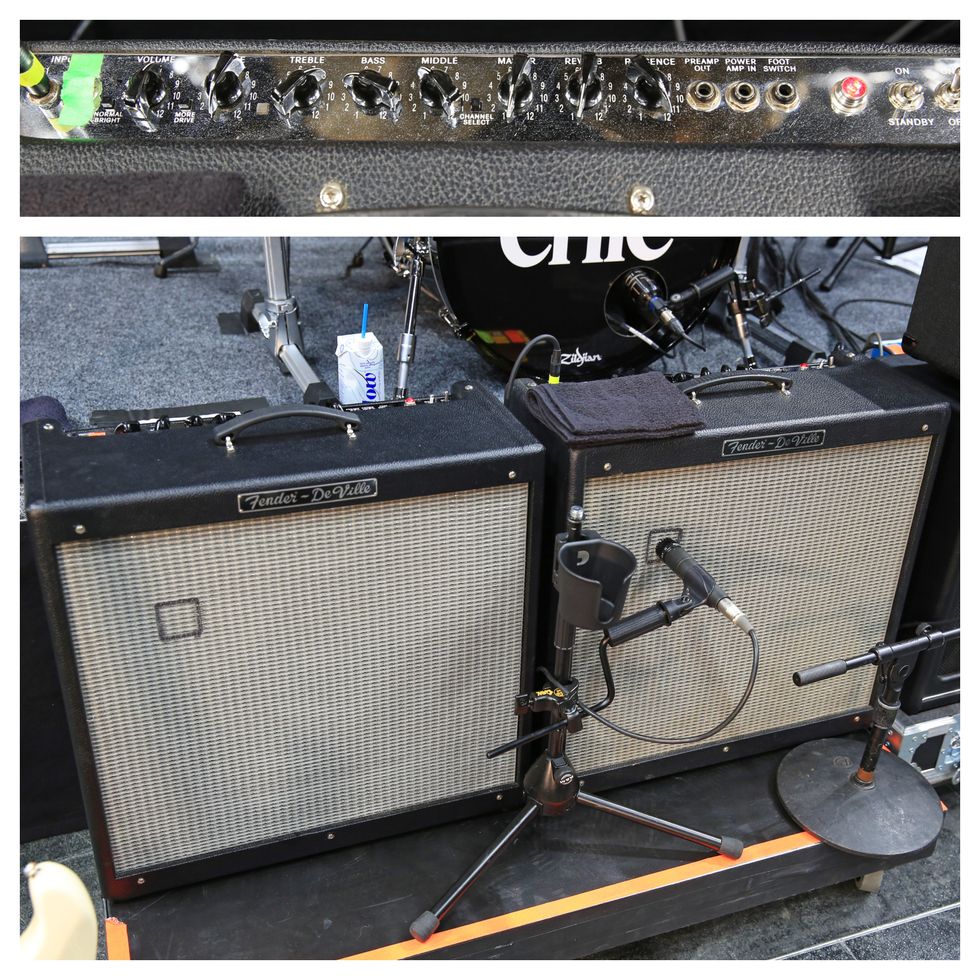
On stage, Rodgers has two Fender Hot Rod Deville 410s behind him. Only one is in use at a time; the other is a backup.
Nile Rodgers' Pedalboard

Rodgers doesn’t drown his sound in effects, but he maintains a simple, sophisticated signal chain into his Hot Rod Deville. He uses a Pedaltrain Classic 2, loaded up with an Eventide PowerMax Power Supply. The Eventide feeds a Korg Pitchblack PB01 Chromatic Tuner, a Boss DD3 Digital Delay, an Ibanez CS9 Chorus, a Mad Professor “Snow White” AutoWah, an Ibanez TS808 “40th Anniversary” Tube Screamer, and a Jam Pedals “Wahcko” Wah Pedal. The stompboxes are all wired together with Reference Laboratory RIC-01 cabling.



![Rig Rundown: AFI [2025]](https://www.premierguitar.com/media-library/youtube.jpg?id=62064741&width=1245&height=700&quality=70&coordinates=0%2C0%2C0%2C0)


![Devon Eisenbarger [Katy Perry] Rig Rundown](https://www.premierguitar.com/media-library/youtube.jpg?id=61774583&width=1245&height=700&quality=70&coordinates=0%2C0%2C0%2C0)




































